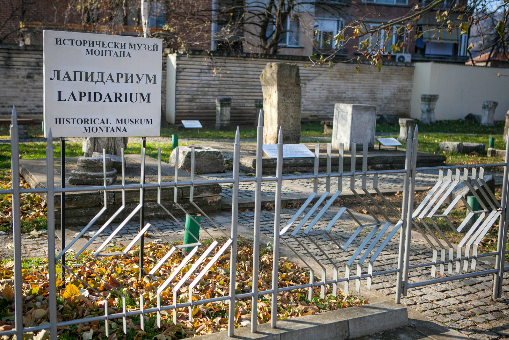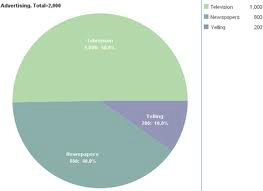
MONTANA |
VIDIN |
DOLJ |
Interactive map |
| CULTURAL-HISTORICAL RESOURCES | CULTURE AND RELIGION | FOLKLORE, CRAFTS AND TRADITIONS | EVENTS | TOUR PACKAGES |
Traditional celebrations and festivals in Chiprovtsi
The festival of Chiprovtsi. It is celebrated on the Day of the Unification of Principality Bulgaria and Eastern Romelia – September the 6th. It is commemorated on the Day of the Unification of Principality Bulgaria and Eastern Romelia. It had been celebrated since 1988 with the occasion of the 300th anniversary of Chuiprovtsi uprising (1688). The celebration coincides with the destroyed in the vicinity Chiprovtsi – Gushovski monastery. According to local legend, many years ago on this day people were walking in the mountains to the monastery, and from the mountain descended white deer (gushovets). People were waiting for him to rest and drink water, and offered as a sacrifice. Once the deer was late, people did not allow it to rest and slaughtered it as it was tired. This happened on September 6, 1688. The subsequent uprising led to the destruction of and the ruin the town and burning of the monastery. Since then, all started honor the day of September 6th, gathering close to the remains of Gushovski monastery and make offering. In Chiprovtsi area in one degree or another are honored the typical for the Bulgarian tradition holidays. Every tourist visiting Chiprovtzi is able to take a direct part in them by immersing in typical festive atmosphere and the accompanying rituals. Christmas Eve and Christmas holiday (December 24-25th). The preparation for the celebration includes preliminary production of “rogalki” (poles). The housewife of each house makes ritual breads – kolach, round loaf. The carols, usually small and bigger boys are visiting the homes on groups around the neighborhoods early in the morning in the day of Christmas Eve and greet the people with the words “Are you parsing the young God?”, and the hosts answer “we praise, we praise” and put on each pole a piece of the ritual bread, and in the bags they put nuts, hazel nuts, apples or money. Carols are singing ritual songs and when leaving usually say “Bog u izhu, mi iz izhu”, and the hosts are throwing after them grains and repeat “Let him be born”. At the same day, the oldest in the house or another family member, but male cuts a durmast tree – “Yule-log”, which is burning during the night. As the final evening of the Advent, on the Christmas Eve are served only Lenten meals (boiled beans, stuffed peppers with beans, stuffed cabbage leaves with rice, nuts, pumpkin pastry, walnuts, garlic, prunes, and others, but an essential place takes the round bread with the coin inside and who takes the piece with the coin is considered to be the lucky one throughout the coming year. The whole family is eating on straw (as all the chairs are moved from the room and turned on the wrong side). With the straw that was used during the dinner are lighted the fruit trees, and the grains of wheat that were in the straw are gathered, the cattle is sprayed with wine. St Jordan’s Day (January 6th). Early in the morning when the bell tolls, people go to the church, after that all are going to the river, where once there was a big elm and consecrated cross of St Joan (now remained only the cross). The priest sprinkles with basil bunch the holy water and serves everyone the silver cross to kiss. In Chiprovtzi is also performed the traditional ritual for extraction of the cross thrown by a priest in the water. On the place of the vow is brought offering – a soup of slaughtered rams, and the priest cuts and take part of the brought by the people kolachi, blessing the offering, and during that time the elderly pour the soup to all who have bows. St. Trifon’s Day (it is celebrated either on 1st and/or 14th of February). It is celebrated in the vineyards, where people eat, drinking, having fun and the vine is cut and is poured with wine and in the afternoon the joy can continue at home. Poklade (Beginning of Lent)(Shrovetide) (the first and Second Sunday before Lent). On these holidays big fires are lit in the neighbourhoods, as anyone is trying to keep his fire to be the biggest one. Everyone goes to the fire to turn „Hullabaloo” (a rod from hazem with the height of a man, split at on end, where straw is put) over their heads, caught with one hand. They also put masks, hang bells and have fun. This is done before dinner. On the dinner usually they eat cheese pie and pork (if the first Sunday before Lent) and “klotskane” is making (a boiled egg is put on thread and then a piece of the pie and is left to hang from the ceiling. The thread is starting swinging and all are trying to swallow the egg and the piece of the pie. Mladentsi. Then the last working-bee is made and the working season starts. The young men take out their new clothes to dress up for the event. The dinner is preparing – small round breads resembling human figures, staffed peppers with beans, cooked corn, pop corns, cheese pie, wine and brandy. Again fires are lit in the neighborhoods. Palm Sunday (Tsvetnitsa). As local people say “Lazar is in Saturday, Palm Sunday is in Sunday”. Early in the morning women are snapping willow and bring it to the church, after which they are buckling it on. A week or more before that they rehearse the Lazarus songs, as those from Chiprovsti region are singing in pairs and with the singing the voices of girls should converge. The girls (lazarki) go to perform the ritual early in the morning by dividing into groups of neighborhoods and visit each house, singing songs for each member of the family and for fertility. The hosts are giving them eggs and money. Easter and Easter holiday. On Holy Thursday the first laid egg is painted, brought to the vineyard and dug into the earth. On Saturday before Easter the eggs are painted– these eggs are called perashki and are given on Monday. Small round breads are knet with holes inside and are put next to the colored eggs. Thus people go to the old godfathers on the Easter. Once, the holiday of Chiprovtsi was celebrated on the day of Easter. |
MOST VISITED
PUBLICATIONS
TOURIST INFORMATION
Where to sleep
Where to eat
Transportation
Recent archaeological excavations, research, restoration
Links
|





 Google Play
Google Play App Store
App Store 
